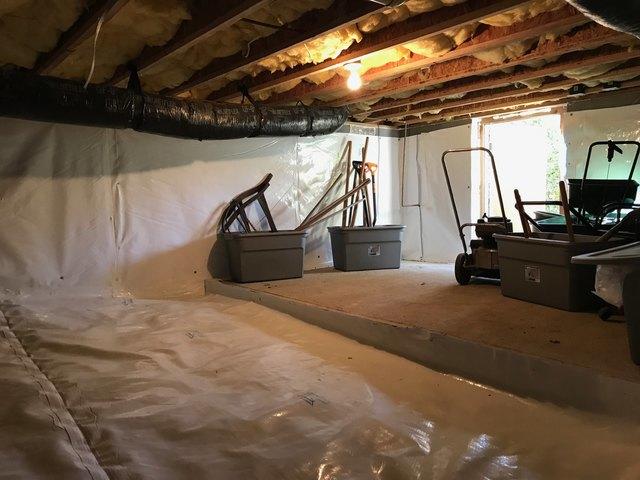
Storage in the Crawl Space
Many homeowners use their crawl space for additional storage space of outdoor equipment. The 20mil CleanSpace liner is durable enough to store equipment and items on with out worrying about rips or tears.

Sealed Crawl Space Vents
All vents are sealed to help control the amount of air carrying moisture entering the crawl space. This is a piece of controlling the relative humidity.
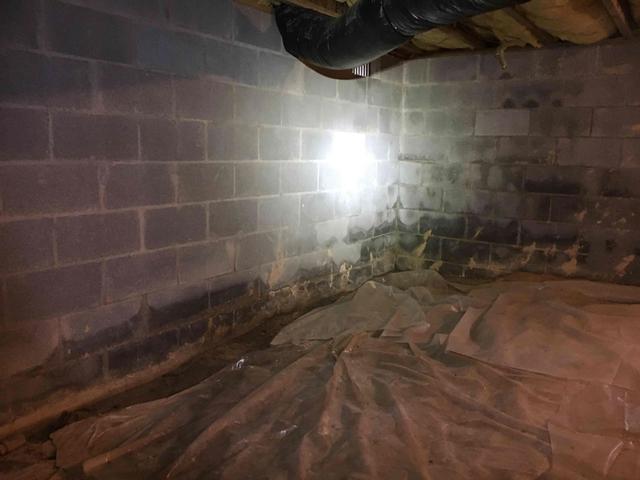
Staining on block walls
The dark spots on the walls are evidence of water infiltration. Often you may see white powdery spots called efflorescence that are evidence of condensation and mineral being pulled to the surface of the block.
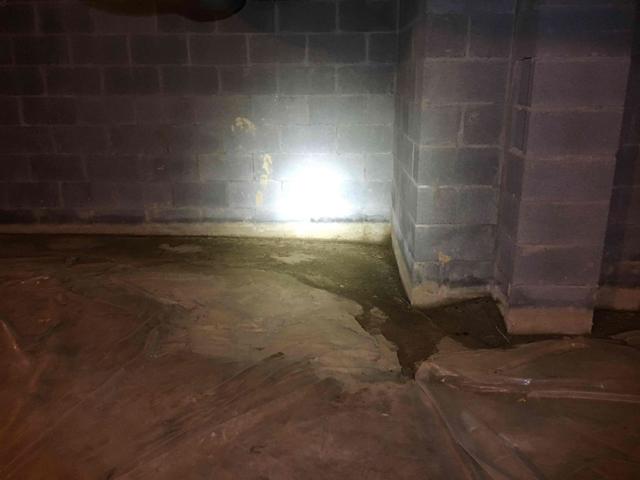
Unsealed 6mil Vapor Barrier
At new construction a 6-mil vapor barrier is laid on the crawl space floor. It is often staked into the ground to hold it in place. However, this barrier is not sealed, and the stakes holding it in place just create more holes for moisture from the earth to find its way into the crawl space. In addition, the 6mil vapor barrier is easily ripped and displaced by critters, rodents, or service persons.
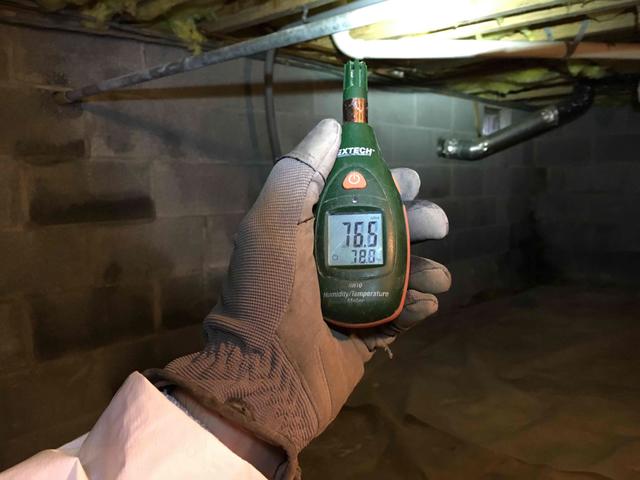
High Relative Humidity
Relative humidity in simple terms is how much moisture is being held by the air at its current temperature. When it reaches 100%, we have condensation and moisture build up in the crawl space. This crawl space has a 76% Relative Humidity, ideally, we want to keep a crawl space's relative humidity under 60% to help prevent microbial growth.
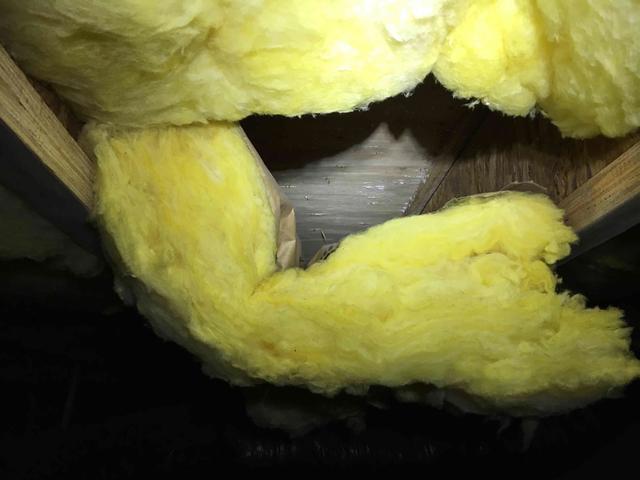
Falling Fiberglass Insulation
Fiberglass insulation begins to fall in the crawl space for several reasons. Often, we see that it collects moisture and becomes heavy, so the weight pulls it down. Another common reason we find displaced or falling insulation is because pests and critters find their way in to nest inside the fiberglass insulation.


